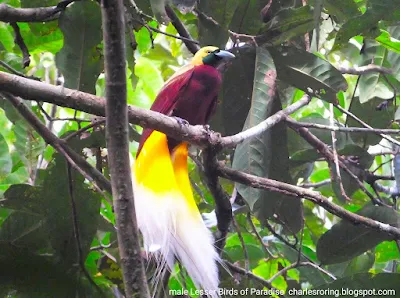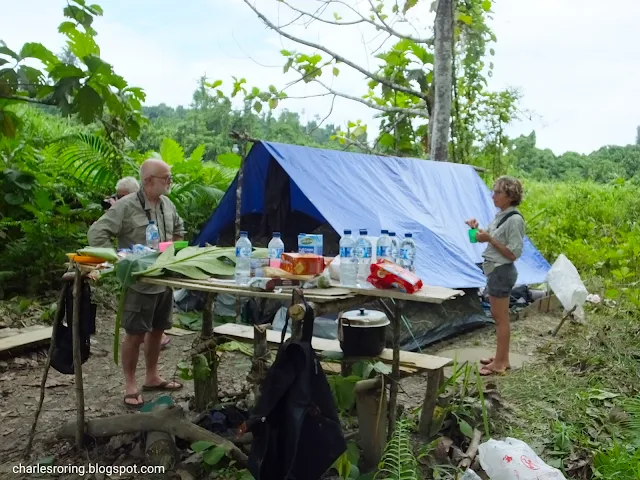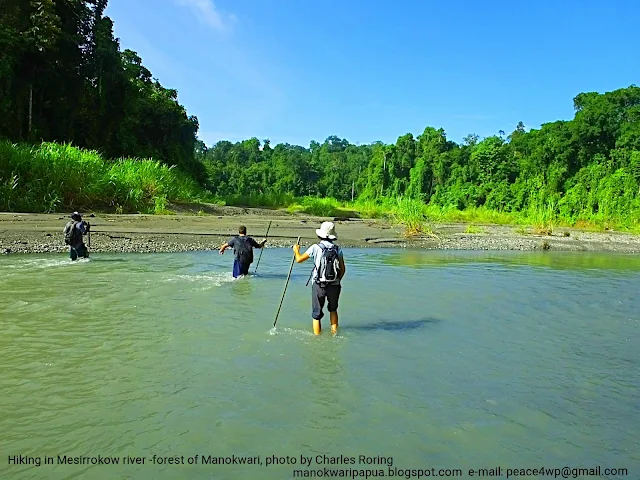 |
| Male Lesser Birds of Paradise |
Visitors spend between 3 to 4 days hiking and watching wild animals in the forest. From my previous wildlife tours in this environment I saw deer, northern cassowary, wallaby, ulysses butterfly and beautiful wild flowers.
Itinerary
Day 1
Walk along the path from the main road to jungle village (1.5 hours)
Arrive in the village, take a rest, birdwatching around the clearing area of the village.
Day 2
Wake-up early in the morning at 04.00. Have tea or coffee and make preparation At 04.30 leave the village for the birdwatching site of Lesser BOP. Arrive at 06.00. Watch birds until 09.00. Walk back to the village. Have lunch. Take a rest. Jungle walk again to watch birds and other wildlife.
After dinner, we could do night walk to see wallaby thats comes out at night to find food and mating partner.
Day 3
Wake up in the morning to birding site of Twelve-wired Bird of Paradise. After that, we will continue to the birding ground of King Bird of Paradise.
After lunch we will go hiking to a hill behind the village. Back to the village, we still can enjoy birdwatching in the clearing area of the village
Day 4
Morning walk to the river in the west of the village. Visitors can enjoy swimming or exploring the surrounding forest. Back to the village. After lunch, we could walk slowly back to the main road again and then back to Sorong city by car.
Booking your rainforest tour
Please, contact me (Charles Roring) by email to: peace4wp@gmail.com or whatsapp: +6281332245180.
I need information such as name, country of origin, date and time of arrival and how long you plan to do the rainforest tour.



















